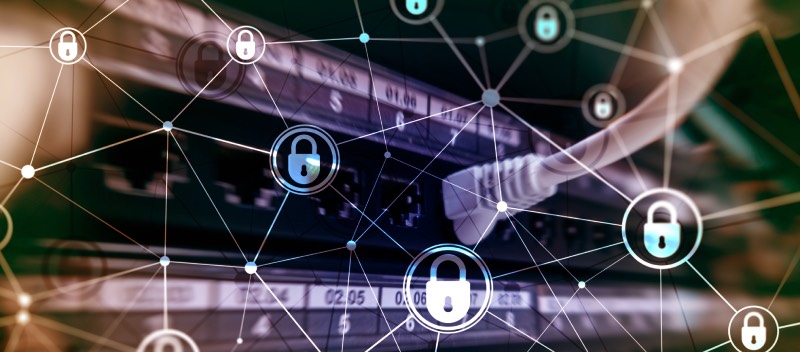Top Firewall Vulnerabilities and Threats

When it comes to keeping the valuable information and other resources in your networks safe from attacks, the firewall is your first line of defense against outside threats. You cannot afford to leave the detected firewall vulnerability unattended. Because even monitoring and penetration testing often fail to reveal the flaws in your perimeter hardware defense. One must probe further to discover potential leaks. Some of the examples we will be discussing are below. Lax Password Passwords are notoriously difficult to remember, leading to the temptation to set straightforward ones or, worse, default to factory settings. If you allow this to happen on your system, you are exposing the data to all possible types of attacks and exploits. This is particularly true for your SQL server if an end-user has failed to strengthen their authentication credentials. The fall of one server jeopardizes all computers that are connected to it. Outdated Firewall Software Vendors release software and firmware updates to help patch up new firewall vulnerabilities that attackers may have found. Suppose your cyber team is lax about keeping your firewalls up-to-date. If so, you are effectively raising your chances of being hacked by a DDoS or any other form of breach that would compromise your data, resulting in financial implications and damage to your brand. Failure to Activate Controls One of the most common firewall issues businesses face is related to controls that might not be appropriately activated. For instance, you probably have anti-spoofing tools on your managed defense system that are designed to keep malware, spam, and other deceptive traffic away. If you do not turn this control on, a distributed denial-of-service attack might happen soon enough. Remember, threat actors are working round-the-clock to gain access, and all they need is one chink in your armor. Protecting your security architecture against potential threats requires effort on your side. Firewall Access May Be Too Lax Some IT management or support staff fail to recognize that users may be accessing the firewall via an unencrypted Telnet connection. As if this were not potentially dangerous enough, malware can also creep into your defense hardware from the web in the same way. Lack of Documentation Without written logs, application documentation, and rule descriptions, your business could be in a terrible position. Especially if a critical IT support staff suddenly leaves. During such a transition period, your organization should not be forced to recreate protocols and rules from the ground up, resulting in a gap in accountability and knowledge as well as difficulties fixing firewall issues when they arise. Vulnerability to Insider Attacks By definition, this common firewall vulnerability is perpetrated by a person who has been permitted to bypass your perimeter firewall and should have been entrusted with access to your internal systems. That does not mean that firewalls cannot still be effective. By implementing an internal firewall network segment configuration strategy (in which you divide your network into independent subnets), the attacker’s progress can be drastically slowed, giving you time to identify, isolate, and neutralize the threat. Inspection Protocols Are Too Basic Attackers have found ways to spoof traditional network firewalls that check the origin and destination of data packets. For that reason, the terms “next-generation: and “next-gen” firewall have been coined to define newer systems that also test the content of the packets using a process called Layer 7 or deep packet inspection. If your company has failed to update or upgrade your firewalls, you might want to request that they do so to protect your systems from a breach. No matter how robust your monitoring, rules, tests, and protocols might be, your system will never be immune from flaws or weaknesses. Safeguarding your brand, data, and intellectual assets can be greatly enhanced by reducing the probability and effects of firewall attacks. Penetration Testing Services One cybersecurity best practice that helps guarantee that IT infrastructures are adequately secured and that vulnerabilities are addressed effectively is Penetration Testing. The goal of a penetration test is to ascertain whether and how information assets may be accessed without authorization by a malicious user. For over a decade, TrustNet has been doing penetration test exercises to uncover hidden security weaknesses. The methodology that we use is guaranteed to check if your systems are secure and come up with actionable measures for improvement.
FFIEC Cybersecurity Assessment Tool

The Federal Financial Institutions Examination Council (FFIEC) is a governmental body made up of five banking regulators. Its objective is to promote uniformity in the supervision of financial institutions. To that end, it provides organizations with a FFIEC cybersecurity assessment tool that is designed to help them identify, assess and mitigate their cybersecurity risk. Further analysis of the components of this framework will help you to understand how this solution can assist your company in its preparedness against the risks that are inherent in today’s cyber environment. What is The FFIEC CAT? Institutions use the FFIEC Cybersecurity Assessment Tool (CAT) to test their current level of risk as well as the maturity of their security strategies. Given the complexity of most business infrastructures, the FFIEC cybersecurity tool offers various criteria that you can use as you measure the effectiveness of your current security profile. These include external threats, delivery channels, connection types and organization-specific features. The FFIEC CAT assists the management of an institution in developing a comprehensive and measurable picture of their current risk and security posture. The FFIEC cybersecurity framework consists of a two-part survey that includes the following: An inherent risk profile showing a company’s current risk level; A cybersecurity maturity assessment that measures an organization’s preparedness to mitigate risks. The reports obtained after conducting this assessment can help the user to better understand their current risk climate in order to make necessary changes and to comply with new industry regulatory requirements. FFIEC CAT Inherent Risk Profile Categories In this portion of the assessment, you will view your risks across five categories: Technology and connection types. Since interfacing with others is one of the most risk-laden aspects of doing business, this category examines all third-party, unsecured and ASP connections. Delivery channels. This category looks at risk that can come from websites, mobile applications and ATM services. Technology and online products and services. Depending on your industry and work scope, these various services can pose numerous risks that must be considered. Organizational characteristics. These are features having directly to do with your particular company such as locations of data centers, number of employees with elevated security privileges, number of in-house employees, security staff changes, etc. External threats. This category considers the number and type of cybersecurity attacks and incidents your organization has experienced. FFIEC CAT Maturity Assessment Categories This section measures your organization’s preparedness levels in five areas: Cyber risk management and oversight. This area specifies who oversees your risk strategy, protocols, program strength, budgeting, staffing and training. Threat intelligence and collaboration. The institution is assessed according to how well its systems detect and predict security threats as well as its monitoring and analysis and the effectiveness of the relationships among stakeholders. Cybersecurity controls. This category grades your automated tools to see how well they protect your data and assets via prevention, detection and correction. External dependency management. This examines all of your oversight and management of all consumer and third-party relationships and connections that have any level of access to your internal data or systems. Cyber incident management resilience. This category examines how well your company has responded to security events. How To Use The FFIEC Cybersecurity Assessment Results Once your management team has completed the FFIEC CAT, you can put its findings to work in a number of important ways. These include the following: Communicate the inherent risk findings to all stakeholders, modifying any policies, procedures or practices that lead to vulnerabilities; Use the results as you contemplate making major changes to your infrastructure as well as after any modifications have been made in order to continually keep your risk profile as a top priority; When considering risk levels, rate each product, activity or service as least, minimal, moderate, significant and most; In terms of maturity assessment, rate each area as baseline, evolving, intermediate, advanced or innovative. By engaging in this best practices process, you can accurately communicate an accurate snapshot of your company’s current risk and maturity status to directors and other stakeholders. Awareness is only the first step in any program. Simply having your management team implement the FFIEC assessment tool will not support your ultimate goal of minimizing threats to your vital data and systems. An equally important part of your duty is to act on its findings. Use them as a guide that can help you to minimize threat risks and update and improve your security systems. When you fully utilize these resources, your networks, programs and services will be better protected against internal and external threats.
Information Security Program

Any management or human resource professional knows that standards and practices can never be truly implemented and enforced unless and until they are thoroughly documented. As you might imagine, this maxim also holds true when it comes to protecting your network, technology and data systems from cyber threats and in planning for the most timely, efficient and effective response should one of these events occur. What is a Security Program? A fully realized information security program is a document that outlines all of your organization’s security guidelines, policies and procedures, practices and controls. The objective of this information security program is to furnish all stakeholders and members of your IT group with a straightforward road map of resources and a plan of action should your company experience a cybersecurity breach. Without this document, it is very likely that critical elements could fall through the cracks. Information Security Programs and Data Protection Whether your organization is in the business of storing or transmitting financial or client data for your customers or if you only are concerned with your own information, its integrity, confidentiality and availability must be paramount. With threat actors on a constant search for vulnerabilities that they can exploit in order to steal or alter this information, implementing a rock-solid IT security program is not a task that can be put on the back burner. Your team needs to focus on it right now. Laying the Groundwork For an Effective Network Security Program In order to move forward with security documentation, you must have a thorough understanding of your business’s goals and objectives by laying a strong security foundation. Its components should include the following: Set forth all of your current policies, standards and documentation as a benchmark against which you can measure future activity. Implement modifications and measure against the original benchmarks. Relay documented results of your measurements to the managers and stakeholders charged with making security-related decisions. Execute the changes that have been ordered by the people in key decision-making roles. Conduct training to specific staff on new solutions, and regularly audit your progress. Importance of Information Security Components Since industries and business types vary widely, it is impossible to describe a one-size-fits-all list of the particular components necessary for a company’s information security program. However, there are several common elements: Framework. This is the foundation of regulatory requirements, best practices and industry certifications that you must abide by in your particular business sector. PCI-DSS, NIST and HIPAA are just some of the compliance standards that might apply to you. Charter. This document has been approved by company leadership and describes the mandate, mission and scope of your security program as it relates to the company’s services, processes and business objectives. Policies. These strong guidelines clearly define how your team and your company as a whole will address all security issues, including monitoring, detection, isolation and mitigation of threats as well as standards for staff and third-party computer, network and mobile device usage. Processes. This combination of tools, procedures, practices, rules and stakeholder roles and responsibilities represents the way your company will go about effectively and efficiently implementing your information technology security program. Measurement. This is the series of tests and assessment tools that you will use to learn whether your security program is meeting its objectives. Once you figure out where it falls short, you can work to plug the leaks and minimize the vulnerabilities. If your enterprise is to remain strong, dynamic and competitive, it must be protected against cyber disaster with a robust information security program. This resource document will prove invaluable as you and your IT group continue to address the constantly evolving attack vectors that threaten your network every day. Considering how precious your data is, you cannot afford to compromise on this crucial document.
Security Maturity Model
There are two complementary objectives of any cybersecurity operation. Tools both automated and human must be in place to monitor network systems, scan for vulnerabilities and predict threats. Additionally, reaction measures must be available should your data come under attack in spite of your best efforts. A fully realized cybersecurity landscape will contain a delicate balance of both, but how does your IT group know how well-prepared you actually are? Implementing a security maturity model can assist you in gaining the insights you need in order to understand what improvements your team should make in your operations. What is a Capability Maturity Modeling? Organizations use the capability modeling (CMM security) process to formally assess and improve their security mechanisms and procedures. The more efficiently the indicated characteristics are increasingly serving to meet stated security objectives, the more mature the operation is said to be. To that end, all processes in the CMM model should be as thorough, constantly improving, repeatable and as automated as possible. Network Security Levels In the capability security maturity model (CMM), five distinct security levels have been defined. Each represents a different stage of network security processes: Level 1: Initial. Processes are unorganized and informal. Rather than being proactive, they are reactive only. They cannot be repeated, measured or scaled. Level 2: Repeatable. Although a preliminary structure has been implemented and some aspects have been defined and documented, discipline is lax and only some processes can be repeated. Level 3: Defined. All processes have been standardized, documented and defined. Level 4: Managed. With measurable processes up and running, the organization can now test, refine, modify and improve procedures. Level 5: Optimizing. Processes are now automated and constantly monitored, analyzed and updated for optimization. As computer technology and business priorities change, even organizations with the most robust security posture may find that they are slipping down to a lower tier. For that reason, it is important to regularly conduct an assessment of how well your cyber landscape is addressing your ongoing internal and external security needs. Why Should Your Company Use An Information Security Maturity Model? The key benefit of employing a cybersecurity maturity model is that it provides a way to help you define and identify weaknesses in the ways you keep your networks, website, hardware and software and other tools secure from external and internal threat. An additional upside to this framework is that it will provide a path to measurement tools and strategies that will be invaluable as you work to take your business security to the next level. Paying attention to these indicators will enable you to plan ahead, making full integration into your company’s security culture a reality. What is the NIST Cybersecurity Maturity Model The National Institute of Standards and Technology (NIST) is committed to furnishing businesses with information about the implementation of practical cybersecurity techniques and promoting program excellence. Their goal is to assist U.S. organizations in optimizing their safety from outside and internal threats. Since the issue of threat actors and cyber crime remains a critical one for enterprises of all sizes, it is clear that frameworks, including the information security maturity model and security incident categories, should set the standard that will make improvement possible.
Benefits of Firewall for Business

You can think of a firewall as a sturdy fence around the perimeter of your company’s network that keeps external threats out while allowing trusted customer and vendor traffic to enter by using a key that you have given to them. For any business, regardless of its size, a firewall should be one of your most essential and best-maintained digital security devices since it will protect your vital data from theft or breach. Benefits of firewall security There are a number of benefits of firewall security: Polices packets. Data is transferred in small packages known as packets. It is your firewall’s job to monitor all packets leaving and entering your company’s network. How do firewalls “know” what to guard against? As the end-user, you can set filtering and traffic rules to customize the system to meet your unique business needs. It blocks trojan attacks. Threat actors engineer tiny pieces of code known as trojan horses that attach themselves to your files. First, they gather intelligence about your server; then, they are sent on to an unwitting recipient via a message or attachment from you. When equipped with the proper rules and capabilities, your firewall is adept at preventing these from entering your system in the first place. It stops hackers and other intruders from gaining entry. Whether it is a competitor who wants to snoop on your intellectual property or a hacker hoping to co-opt your data for profit, many entities seek to usurp your cyber boundaries. A firewall for business closes the holes in your perimeter, securing your assets and minimizing the chances of unwanted breaches. Halts keyloggers. When allowed to do so, these bad actors infiltrate your system with spyware that records the keystrokes of your users, enabling them to gain access to sensitive passwords and other proprietary data. A good firewall minimizes the chances that this software will infect your cyber environment. Considering the above advantages of firewall protection, it is no wonder that the comprehensive firewall has become an essential element of any personal or corporate security management and support solution. Types of Business Firewalls Although private citizens should also employ firewall software to safeguard their computers and networks from malicious internet traffic, businesses need more robust protection solutions. There are four levels of business-grade firewall protection: Network-level. These solutions inspect packet headers, filtering traffic based on the IP addresses of the source and destination computers, the services requested, and the port or ports used. Circuit-level gateway. It works at the circuit layer of the open systems interconnection or the transmission control protocol/internet protocol layer (TCP/IP). By monitoring the “handshake” or interaction between packets, this type of firewall determines the legitimacy of a session. It can hide the network from outside invaders and restrict access via customized rules. Application-level gateway. Also known as a proxy, this firewall works as circuit-level firewalls do except on specific applications. It can block websites based on their content instead of their IP address to guard against malicious attacks, spam, and viruses. Because of their thoroughness, these types of firewalls are slow, and they require manual configuration for each user system. Stateful multi-layer gateway. Packets are filtered at the network layer; legitimacy is evaluated, and packet contents are assessed at the application layer. This type of firewall also offers a fully transparent connection between the host and user. This type of firewall is faster and just as thorough as its application-layer counterparts but is more expensive. In addition to providing a shield against outside bad actors and antivirus protection, an advanced business-grade firewall also ensures the internal safety of an enterprise. When this protection is set up properly and programmed with the right rules, it can produce reports on any activities on the networks it patrols that are not business-related. It can also block users from going to online sites such as shopping or social media destinations. Furthermore, the firewall can provide employees accessing the network from a remote wireless device with a seamless and uncomplicated user experience. Now that you understand how these cybersecurity guardians work, you can probably identify the critical benefit of a firewall. When it comes to the best means to protect your hardware, software, networks, and office systems, you need to obtain the best firewall service that addresses your company’s needs and meets industry compliance requirements. Once your firewall is in place, it will boost your cybersecurity posture, enhance staff performance and enable your IT and security teams to maintain a constantly evolving, secure boundary around your vital information systems and website.
Data Center Security Best Practices
Network Segmentation: Security Benefits and Best Practices

In an era where cyber attacks can take a profound toll on organizations of all sizes, your company needs a multi-layer cybersecurity architecture. One of its most important aspects is the hardware firewall that regulates the flow of all traffic coming into and exiting your network. There are several ways that you can configure this perimeter security service to meet your unique needs, and one of the most powerful is known as network segmentation. Because implementing this security strategy is no easy task and the model is not ideal for all businesses, it makes sense to learn if this method will improve your infrastructure and be worth the investment of resources that it requires. Network Segmentation Security Defined As the name suggests, this practice involves dividing a network into several smaller zones known as subnets whose data has similar compliance requirements. Each of these subnets functions as its own small network, and it is possible to control or totally block the flow of traffic among them based on rules and stipulations that are set up in advance. Benefits of Segmentation in Network Thanks to a network segmentation design, productivity and efficiency are boosted because data only goes where it is needed. As a result, your computer networks and other resources can be protected in a more robust and efficient way. Benefits include the following: Hampers attackers. If a threat actor breaches your firewall and gains access to your servers and applications, time is of the essence. When your large network environment is broken up into smaller ones, navigation becomes more challenging for a cyber criminal looking to gain access to your sensitive information. During those precious minutes or hours, your internal threat detection, isolation and neutralization cybersecurity tools can limit the breach, hopefully before serious damage has been done. Provides enhanced security. A segmented network is particularly beneficial when it comes to your most sensitive caches of data. The more you are able to control and contain traffic and limit what flows to your critical assets, the easier it is to secure and protect them. Enables you to limit user permissions. This is known as the Policy of Least Privilege in which access to applications, services, programs, accounts and systems is given only to those who absolutely need it. Segmentation gives you a way to protect data in the event that a user’s credentials are compromised from the outside or abused from within your business. Limits the scope of an attack. By restricting the impact to a small number of workstations, segmentation helps to minimize the impacts of an external breach or the fallout from internal human error. Segmentation can also provide increased protection against any vulnerabilities that could infect your data center or network stemming from a third-party vendor. All in all, putting this configuration into place furnishes segregation of traffic flows that helps to keep your entire cyber environment safer. Although setting it up can be time- and labor-intensive, network segmentation minimizes the likelihood that threats will turn into a full-scale intrusion. Network Segmentation Best Practices A strong network security structure should contain several parts. For one thing, it is essential that your design features an internal zone that is highly protected against breach and never directly accesses the internet. This zone contains workstations, internal servers, non-internet facing databases, active directory services and internal networks. You will also need an external untrusted network zone. Finally, many configurations include a framework of intermediate security zones that group similar systems and servers together in a Layer3 subnet. The network segmentation strategy works by controlling the traffic flows among the various servers and zones at all levels, including IP, port and application. Depending on your company’s functionalities and requirements, you will need to determine how to segment a network optimally to suit your needs. However, keep in mind that the servers in your Layer3 DMZ subnet may have to be internet-facing. Examples include email and web servers that bring in data from outside. In these situations, you should separate them from other less vulnerable applications. Best practices also pertain to the regulation of traffic flow. Your segmented firewall product should be configured such that it only accepts traffic from specific ports such as 25 and 80,443, etc. In addition, all other TCP-UDP ports should be closed. Another best practice relates to the segregation of servers. In general, database servers should not be in the same zone as web servers; front end and web application servers should also be kept distinct from each other. Even the most robust network segmentation methods are only a small part of the full suite of products, services and human expertise that you will need to assemble to increase your cybersecurity posture. Additional advice in this respect includes utilizing a cloud-based web filtering application that can help you to enforce your security policies with staff. This solution works by preventing end users from going to websites known to contain malware or that go against your established usage protocols. Improved security is an ongoing battle. With threat actors constantly evolving in their techniques and strategies, it is essential that your IT team and third-party vendors use every resource and tool at your disposal to protect your valuable assets. Network segmentation may well be one of your most effective investments.
Benefits of Information Security

Data privacy, confidentiality, availability, and integrity should be guaranteed in any organization. While it is all too easy to let your attention to information security lapse in favor of putting out immediate and visible business-related fires, procrastination, and minimization can be a fatal mistake. You need to do all you can to plug the holes, mend the flaws, and train the people who will be working directly and indirectly with your network systems to keep risk low. That is the critical job of a strong security architecture with numerous vital components, all of which can benefit your business. Protect Against Threats Once hackers gain access to your network system, they can commit identity theft, sabotage your operations or even turn your computers into bots. The worst news of all is that they only need to succeed once in their attempts to breach your defenses. Therefore, the combination of technology and human expertise involved in your cyber safety infrastructure must be as robust as possible. That means developing training and implementation protocols and policies that specify which staff members or outside contractors will be responsible for each particular security task as well as a thorough incident response plan that can go into action should attacks or theft happen. Security Information and Event Management (SIEM) software can help you learn about security events when they occur by immediately logging them. Since it will also show you what the attacks are doing, it gives you the intelligence to improve your system and keep your business safe. For more information on our cybersecurity services, Talk to Our Experts Today Remain in Compliance With Industry Standards Most sectors have implemented their own sets of procedures and protocols that must be followed by the companies with whom they do business. Just some of these include: Payment Card Industry Data Security Standard (PCI DSS) for any organization that stores, manages, transmits or otherwise handles credit card data; Health Insurance Portability and Accountability Act (HIPAA) for all providers and insurance companies who handle sensitive patient medical information; Gramm Leach Bliley Act (GLBA) for financial institutions safeguarding customer data; General Data Protection Regulation (GDPR) to protect payment data for EU customers. Depending on the regulation, you’ll need to implement related security controls. While that’s an extra investment of time and resources, it’s a differentiator and puts you ahead of the game. Gain Credibility and Trust When your security architecture is strong and you comply with industry audit and compliance standards, you can communicate your accomplishments. Show your credentials, and potential customers will see the visible signs of your credibility and will trust you more. The same goes for current and future business partners and lenders. For any business today, a full and evolving risk assessment and cybersecurity strategy is not a nice to have; it’s a must-have that’s growing in importance and can’t be overstated. Protect your assets by protecting your email, apps, and access to your website and system networks with a safety net of processes, procedures, technology, and human governance. Implementing this is hard but the benefits of information security are substantial. A business that takes time to properly manage and protect the security of its data environment is much more likely to avoid most attacks and be resilient should the worst occur. Essential Cybersecurity Measures for Business Success In the end, protecting your business data is not just an option; it’s a must. A strong security architecture provides more than just protection; it establishes you as a trustworthy organization in the eyes of consumers and partners. By defending against cyber threats, following industry standards like PCI DSS and GDPR, and building credibility your business will be more resilient.
Types of Firewalls

Threat actors are constantly prowling the perimeters of your computer network in search of a way to infiltrate it for their own destructive reasons. Companies cannot completely lock up their security landscape so tightly that unnecessary traffic is prevented from entering and leaving. A firewall is the intelligent gatekeeper posted at the entrances to your applications, databases and networks. It is responsible for monitoring anything that is attempting to come in or go out, allowing it or preventing it from doing so based on the specifications you have set. It can be software, hardware or cloud-based. This, however, is a very general definition. Firewall diagrams reveal that there are many different firewall configurations and firewall controls. To protect the security of your organization’s computers and systems from unauthorized outside access, you need to know the types of firewalls in order to determine what best meets your unique needs. Since a robust firewall is your first line of protection against attacks on your networking functions, it is vital that you understand the distinctions among the firewall types. Firewall types Packet-Filtering Firewalls If you want to identify the simplest method of filtering traffic, this layer 3 firewall might be the best solution. These simple FIREWALLS systems are the most traditionally used among corporations. They work by applying a pre-configured set of security rules to all packets coming into or going out of the corporate network. For instance, you could equip this system with a rule that would deny entry to data from specific IP addresses or that uses a particular protocol. When configured with technical rules that are fine-tuned and up-to-date, these traditional network firewalls are both affordable and effective. Circuit Level Firewalls A circuit level firewall, also known as a layer 4 firewall, will filter traffic via inspection of the transmission control protocol (TCP) handshake that occurs between packets of information without actually scrutinizing the content of the packets. For that reason, malware can still slip through if these firewalls are the only security gateway services your company uses. Next-Generations Firewalls On the surface, next-gen firewalls, sometimes also known as a container firewalls, are similar to their traditional corporate firewall counterparts. However, firewall generations accomplish their goal of protecting against unwanted traffic by looking at the specific contents of each data packet instead of simply examining its protocol, IP addresses and ports. With this added functionality, you can further customize your rules, allowing you to prevent the use of specific applications such as social media and to close off certain capabilities within networks such as the file-sharing portions of Skype. This type of application layer firewall is highly effective in filtering out threats because of its nuts-and-bolts, granular approach. However, this level of detail comes at a price: next gen firewalls are more expensive and slower than other firewall technologies. Stateful Inspection Firewalls Building on the tools found in packet-filtering firewalls, these not only employ preset rules to regulate traffic flow but also intelligently look at the content to determine if it should be allowed to go through. Furthermore, this type of gateway firewalls filtering documents session data from start to finish and filters traffic based on port, protocol and origination and destination addresses. Web Application Level Firewall These security configurations contain firewall proxy servers that act like sentries between applications that are running on the corporate network and the users who are accessing them from outside. Think of them as a buffer that shields the application from port scans and external snooping while simultaneously analyzing and filtering all data to secure the application against hackers. Especially for organizations that receive significant internet traffic, using this variety of dedicated firewall in conjunction with other different types of firewalls can be the most effective overall solution to prevent breaches. Database Firewalls Since databases are the repositories of a great deal of confidential and sensitive client information, they often merit special firewall architecture of their own. If a database firewall is only protecting a single server, it will usually be placed right in front of it. However, these gateway firewalls are put near the network entrance if they are tasked to protect more than one database. Database firewalls work to guard against security threats such as cross-site scripting that is designed specifically to target confidential data. Unified Threat Management (UTM) Firewalls Think of these appliances as all-in-one firewall boxes that plug directly into your network and contain many of the features of the other firewalls types we have described. These usually include traditional network firewalls, internet gateway security, intrusion detection, web address blacklisting and other web application and next generation firewall features. UTMs are particularly beneficial for small to medium-sized businesses who want robust network security but may not have the resources or technical know-how to implement it on their own. All of the security features contained in UTMs can be managed from one console, making them effective yet simple to use. Cloud-based Firewalls Run remotely by outside providers, cloud-based firewalls provide protection for all of your IT assets. Because they are administered by professionals in very secure locations, these firewalls rarely experience downtime or service interruptions. They are particularly suited to large organizations or businesses with more than one physical location. Network Segmentation Firewalls Also known as internal network firewalls, these are designed to control traffic that moves between distinct parts of the network such as websites, departments and databases. In the event of a breach, the infected area can be walled off until the situation is fully addressed. As you can see, firewalls network security is not a one-size-fits-all proposition. Gateway firewalls are different from each other in order to meet a business on whatever level of need it may possess. For the sake of your clients, your data confidentiality and integrity and the reputation of your enterprise, it is crucial that you carefully examine all of your firewall filters options so that you can choose the solution that offers maximum protection and the features you need at a price
Best Practices for Entreprise Email Security

With malware rampant and a ransomware attack occurring roughly once every 40 seconds, your company needs to do all it can to protect itself against these highly destructive threats to your data and gateway infrastructure. Phishing and other abuses of email are the main culprits, yet many IT teams fail to implement a set of email security best practices that can go a long way toward minimizing your risk level. Incorporating these solutions into your cybersecurity infrastructure can potentially save your enterprise thousands of dollars and countless hours of time spent trying to recover from the disaster. Corporate Email Security Best Practices It only takes one fatal error to bring an entire network down when an employee opens a malware-laden attachment. Therefore, the best advice is to put guidelines for secure use of email in place that will protect your personnel from being the unwitting victims of a scam or cyber crime. That means investing in a high-quality spam filter, automated attachment scanning and data encryption as a baseline email security best practice. Passwords are easy to forget, which is why human beings have a tendency to use predictable strings of characters and numbers. The problem is that bad actors take advantage of this tendency. Be sure that all staff passwords are complex, random and changed frequently, with a different one for each account. Furthermore, they should never be shared under any circumstances. A spam filter is your first line of defense against destructive junk mail but not your last. Staff should also be instructed never to open suspected spam emails or to click on “unsubscribe.” To avoid being the victim of a phishing attack, employees should be prohibited from divulging personal information via email even if the sender appears trustworthy. Map Your Systems to Identify Weaknesses Like it or not, even the most secure environments have leaky spots and vulnerabilities. Although you will never eliminate all of them, the only way to avoid or neutralize the majority is to take a long look at your entire network. Assess your assets, including external services such as cloud providers, determining where potential flaws and web privacy breaches lie. Provide Training to Your Employess Once you have insights into where the fault lines lie in your infrastructure, your next goal should be to furnish thorough training to your employees. This involves comprehensive education about how to formulate strong passwords that change regularly, best practices about how to deal with email attachments even if they appear to be from trusted organizations and the most updated knowledge about the latest phishing, fraud and malware scams. Once they learn this information, your staff can be part of the solution and help to keep your business systems free from hacks and fraud. Produce and Enforce a Policy About BYODs These days, staff members are increasingly using their own mobile phones and laptops to conduct job tasks. While this solution is convenient in some ways, it opens up a whole new box of potential threats. For instance, smartphones are frequently lost or stolen, which could put sensitive proprietary data in jeopardy. Therefore, it is vital that you enact a protection policy that will safeguard smartphones and other devices. Know Your Business Email Security Incident Response Procedures Should a breach occur, chaos often ensues. That is not the time to scramble around trying to put together a threat response strategy. Your organization’s management team, combined with your cybersecurity task force, must have a robust set of instructions already in place and approved by all stakeholders to address exactly what to do in the event of a serious breach. This protocol should lay out exactly what external entities must be told and when. In addition, it should set up a strategy to contact the IT team who can temporarily block all incoming emails until the scope of the problem has been determined. Finally, your team must conduct a forensic investigation to figure out what went wrong, whose fault it was and how to keep a similar incident from recurring. Don’t Forget About the Essentials of General Enterprise Email Security While advanced measures can be extremely helpful, the power of paying attention to basic software and network security practices can never be overstated. To that end, no one in your organization should send personal or sensitive information via email. Your email provider should use SSL or TLS to encrypt all messages. Lock down all user drive permissions to prevent infection from viruses and other malware, and keep all software up-to-date. Consistently taking these email security tips seriously can provide the foundation that your more advanced integrated monitoring and security plan is built upon. Avoid Public WiFi Email attachment security best practices also pertain to what you or your staff do outside the workplace, particularly when it comes to the use of free public WiFi connections. Although these resources may appear safe, hackers can easily intercept emails and break into your systems with information they glean from this source. A better tool would be to purchase an internet dongle that you can provide for each staff member. It can be easily connected to their laptops and, along with interfacing with the internet using a mobile browser, is much safer. You don’t need to be a tech expert to practice safe email security strategies in your organization. Take the time to develop a far-reaching suite of basic and advanced protocols, train everyone involved and keep changing with the times using threat intelligence. Once you do, your security team will be furnishing your organization with an invaluable service.



